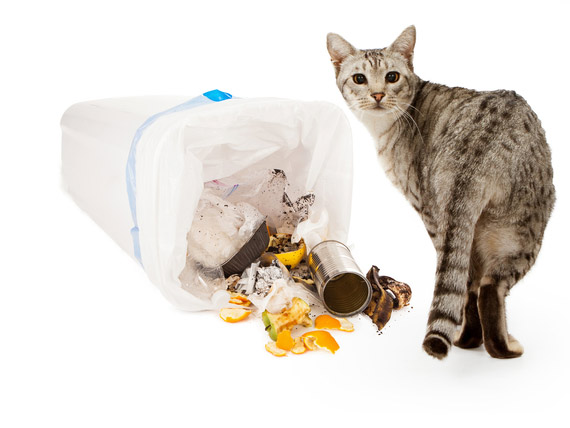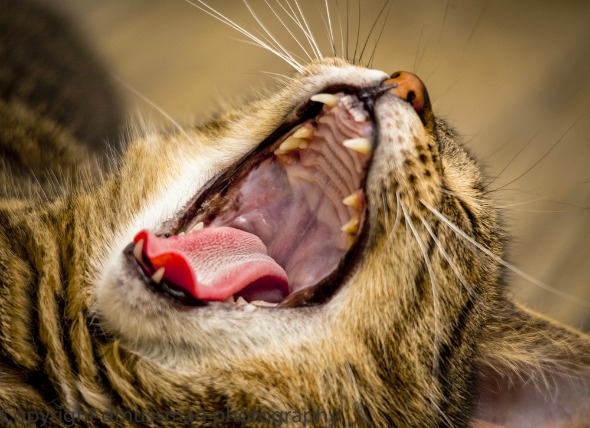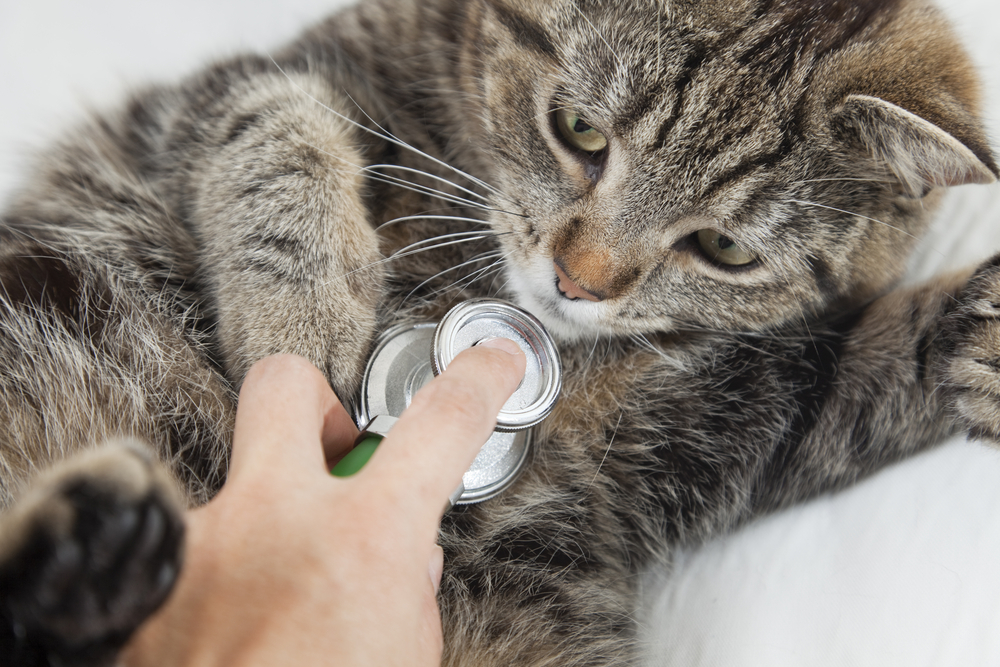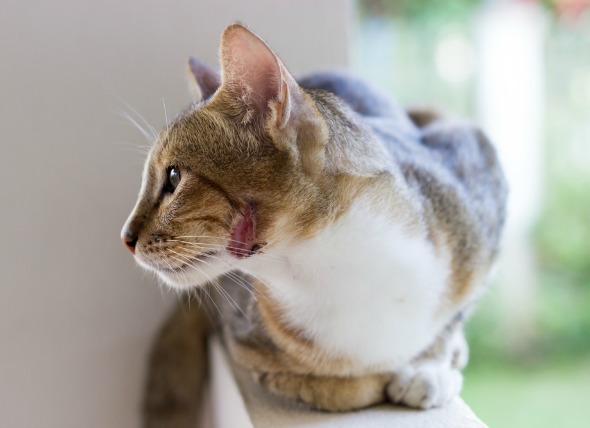

It is normal for cats to scratch things. They do this to sharpen their claws and exercise their feet. It is also normal for cats to spend a lot of time licking themselves, since this is how they clean themselves. When cats scratch or lick the wrong things and do not respond to discouragement, they are diagnosed as having a destructive behavior problem. Not all destructive behavior is the same, however. When a cat scratches on the wrong things but does not have any other symptoms, this is usually a primary destructive behavior. Conversely, cats that spend too much time licking or scratching at things likely have a secondary destructive behavior. Both types of destructive behavior can lead to problems with other organs, such as the stomach and intestines, if left untreated.
Your veterinarian will need a complete medical and behavior history so that patterns can be established, and so that physical conditions that might be linked to the behavior can be ruled out or confirmed. Things your veterinarian will need to know include when the destruction first started, how long it has been going on, what events seem to set off the destruction and whether or not your cat is alone when the destruction takes place. It is also important to tell your veterinarian whether the destruction has gotten worse, better, or remained the same since it was first noticed.
During the physical examination, your veterinarian will be looking for signs that your cat has a medical problem, which might be causing the behavior. A complete blood count, biochemical profile, and urinalysis will be ordered. These will tell your veterinarian whether there are any problems with your cat's internal organs which might be causing the behavior. A blood thyroid hormone level may also be ordered so that your veterinarian can determine if your cat’s thyroid level is low or high. Sometimes, imbalances of thyroid hormone can add to destructive behavior.
If your cat is eating items that are not food, a condition referred to as pica, your veterinarian will order blood and stool (fecal) tests to specifically test for disorders or nutritional deficiencies that would lead to pica. The results of these tests will indicate whether your cat is able to digest its food properly and is absorbing the nutrients that it needs from the food. If your cat is older when these behavioral problems start, your veterinarian may order a computed tomography (CT) scan or a magnetic resonance image (MRI) of your cat's brain. These tests will allow your veterinarian to visually examine the brain and its functioning ability, making it possible to determine if there is a brain disease or a tumor that is causing the behavior problems. If no medical problem is found, your cat will be diagnosed with a behavioral problem.
If a medical problem has been confirmed, that problem will be treated first. Usually, treating the illness will resolve the behavioral problem. If your cat does not have a medical problem, your veterinarian will develop a plan to treat your cat's behavior problem. In most cases, a combination of training and medication will be necessary. Medication alone does not usually solve the problem.
For primary destructive behaviors, your veterinarian will help you to come up with a plan for directing your cat’s destructive actions towards objects that are appropriate. This will help you to train your cat to scratch on the things that you approve of, and prevent your cat from scratching on the things you do not want destroyed. While you are in the process of teaching your cat what it can and cannot scratch, plastic covers can be used to keep it from destroying your furniture.
Treatment of secondary destructive behaviors will involve a combination of medications and training. Your veterinarian may choose to prescribe an anti-anxiety medication to help your cat respond more quickly to the training. You and your veterinarian will also develop a training plan to help your cat learn how to behave in a more appropriate way. Once your cat has learned not to destroy things, you may be able to stop the medication. However, some cats need to be medicated for anxiety for some time to help them to get over their destructive behavior.
When you first start the training and medication program, your veterinarian will want to talk with you frequently to make sure that things are going well. It is important that you give medications exactly as directed by your veterinarian. If your cat has been prescribed medication, your veterinarian may want to follow-up with complete blood counts and biochemistry profiles to make sure the medications are not adversely affecting any of your cat's internal organs. Make sure that you do not give any other medications to your cat while it is under the veterinarian's care unless you have first consulted with your doctor.
It is most important that you be patient with your cat while it is learning not to be destructive. This can be a slow process and may take several months or more. Some cats have more anxiety and reluctance to learn new behaviors and may need long term medication and training.
It is important to start training early with kittens, teaching them what they can and cannot scratch or claw on. During the training phase of your cat's growth, plastic covers can be used to keep it from damaging your furniture and rugs. It is also important to watch your cat carefully for any changes in its behavior. Treating medical or behavioral problems early makes them easier to treat and less likely to become habitual.
Image via Shutterstock
 Mouth Ulcers in Cats
Gingivostomatitis and Caudal Stomatitis in Cats
G
Mouth Ulcers in Cats
Gingivostomatitis and Caudal Stomatitis in Cats
G
 Staph Infection in Cats
Staphylococcal Infections in Cats
The Staphylococ
Staph Infection in Cats
Staphylococcal Infections in Cats
The Staphylococ
 Bacterial Infection (Pyoderma) of the Skin in Cats
Pyoderma in Cats
When a cat's skin is cut or
Bacterial Infection (Pyoderma) of the Skin in Cats
Pyoderma in Cats
When a cat's skin is cut or
 Coronavirus in Cats
Feline Infectious Peritonitis (FIP) in Cats
Felin
Coronavirus in Cats
Feline Infectious Peritonitis (FIP) in Cats
Felin
 Flea and Tick Medicine Poisoning in Cats
Pyrethrin and Pyrethroid Toxicity in Cats
Pyrethr
Flea and Tick Medicine Poisoning in Cats
Pyrethrin and Pyrethroid Toxicity in Cats
Pyrethr
Copyright © 2005-2016 Pet Information All Rights Reserved
Contact us: www162date@outlook.com